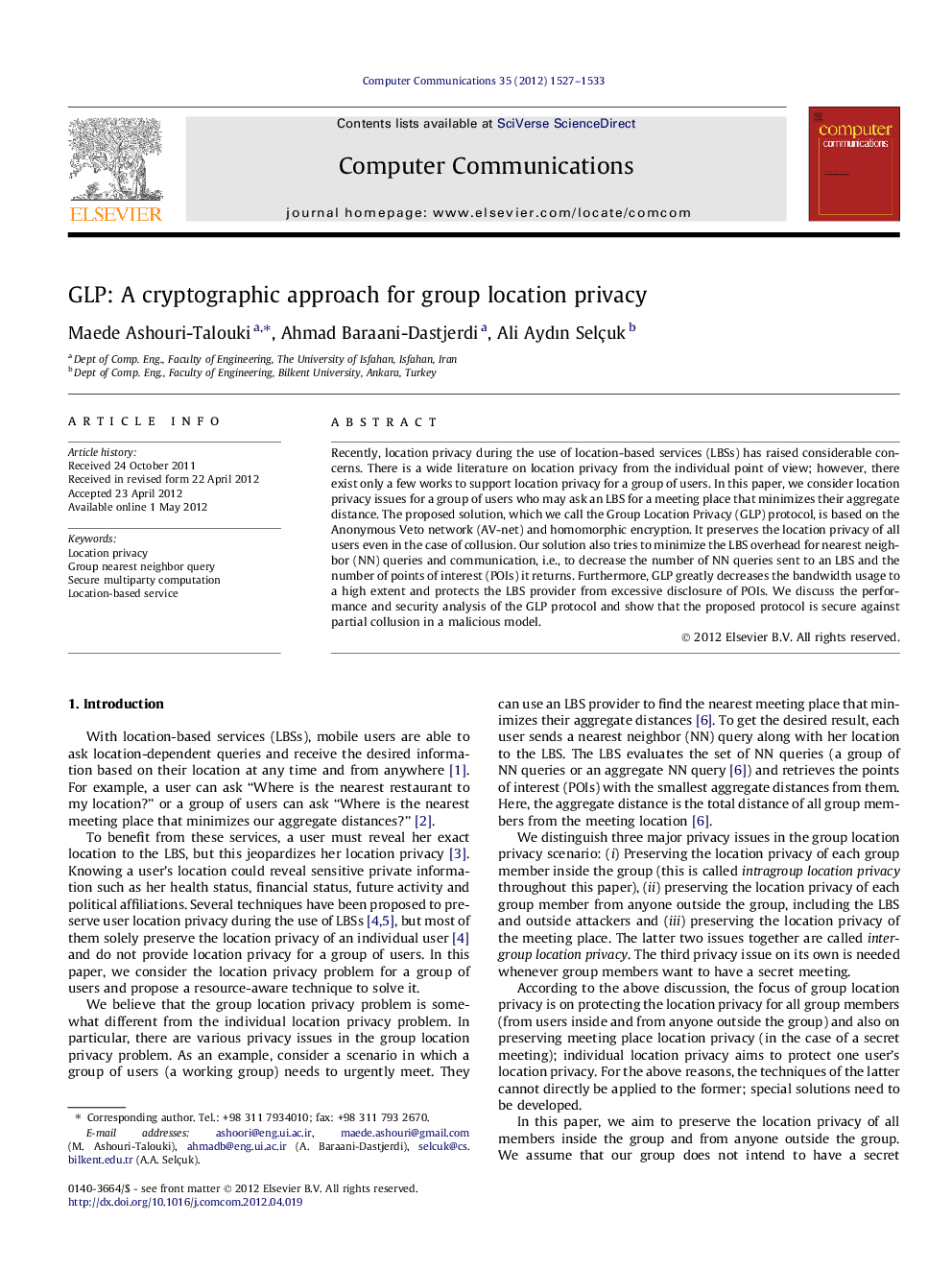| کد مقاله | کد نشریه | سال انتشار | مقاله انگلیسی | نسخه تمام متن |
|---|---|---|---|---|
| 446160 | 693302 | 2012 | 7 صفحه PDF | دانلود رایگان |

Recently, location privacy during the use of location-based services (LBSs) has raised considerable concerns. There is a wide literature on location privacy from the individual point of view; however, there exist only a few works to support location privacy for a group of users. In this paper, we consider location privacy issues for a group of users who may ask an LBS for a meeting place that minimizes their aggregate distance. The proposed solution, which we call the Group Location Privacy (GLP) protocol, is based on the Anonymous Veto network (AV-net) and homomorphic encryption. It preserves the location privacy of all users even in the case of collusion. Our solution also tries to minimize the LBS overhead for nearest neighbor (NN) queries and communication, i.e., to decrease the number of NN queries sent to an LBS and the number of points of interest (POIs) it returns. Furthermore, GLP greatly decreases the bandwidth usage to a high extent and protects the LBS provider from excessive disclosure of POIs. We discuss the performance and security analysis of the GLP protocol and show that the proposed protocol is secure against partial collusion in a malicious model.
This paper proposes a cryptographic protocol – GLP – to preserve the location privacy for a group of users during the use of location based services (LBSs). The GLP protocol preserves the location privacy of all users even in the case of collusion. It is resource-aware as it minimizes the number of sent queries and the number of returned points of interest (POIs). The GLP also protects the LBS from excessive disclosure of POIs.Figure optionsDownload as PowerPoint slide
Journal: Computer Communications - Volume 35, Issue 12, 1 July 2012, Pages 1527–1533